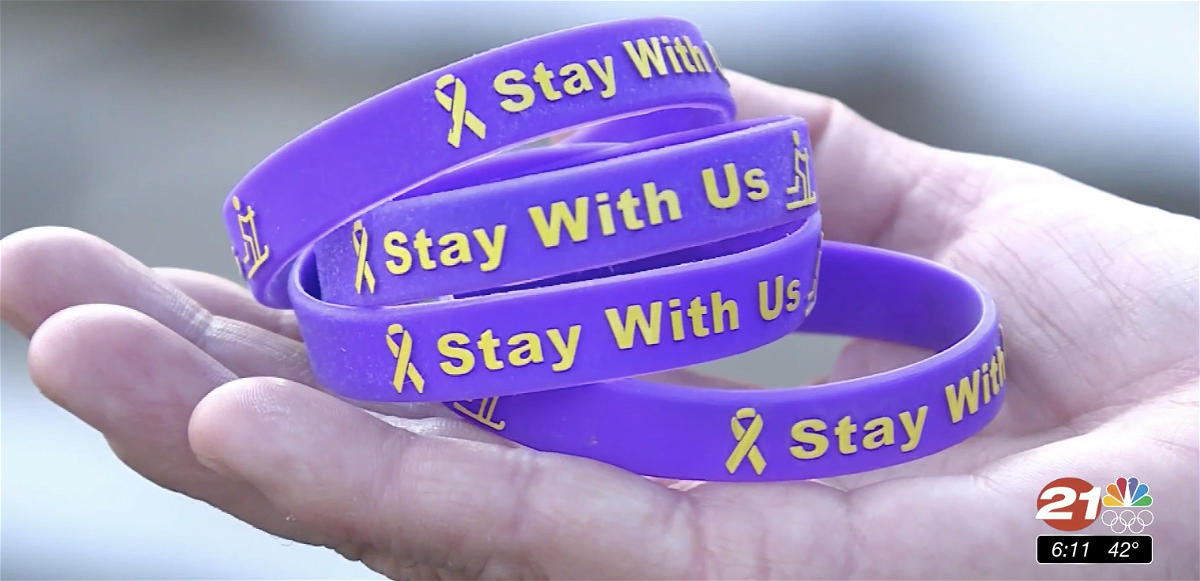Oregon suicide rates decline, but still remain above national average

PORTLAND, Ore. (KTVZ) — Oregon had the nation’s 13th highest suicide rate across all ages in 2020 — an improvement from the year before, when the state was ninth in suicide deaths, according to suicide mortality data published by the Centers for Disease Control and Prevention.
The state had 18.3 deaths by suicide per 100,000 people in 2020, with a total of 833 deaths. In 2019, the suicide death rate was 20.4 per 100,000, which amounted to 906 total deaths. Oregon was one of seven states that showed a decrease in suicide rates between 2019 and 2020, according to CDC data released in February.
According to the recently published Youth Suicide Invention and Prevention Plan annual report, Oregon had success in reduction of suicide deaths for youth. The number and rate of suicides for youth aged 24 and younger decreased in 2020 by nearly 14%, from 118 deaths in 2019 to 102 deaths in 2020. The decrease placed Oregon 18th highest in the nation – an improvement from 2019 and 2018, when Oregon ranked 11th highest in the nation for youth suicides.
The reported youth (under age 25) suicides in 2020 included three in Deschutes County and one each in Jefferson and Crook counties.
“While we are encouraged by 2020’s downward trend that shows our work with partners to address youth suicide is helping in some counties, we still have a long way to go to improve outcomes among all Oregon communities,” said Oregon Health Authority Behavioral Health Director Steve Allen. “Racial and economic inequalities impact the overall health of many of our communities, and we have much work to do to alleviate this injustice. Our hearts grieve alongside the Oregon communities and families that have experienced suicide loss.”
Call volume to Lines for Life, a regional substance abuse and suicide prevention nonprofit that operates several crisis helplines, has increased annually since 2016. Of the crisis calls staff answered, roughly the same percent of callers reported thinking about suicide in 2020 as in 2019.
What we know about Oregon in 2021
Preliminary 2021 data for Oregon indicate a three-year decreasing trend in youth suicide numbers for youth aged 24 and younger. While Oregon’s youth suicide deaths have decreased, it must be noted that Oregon’s youth suicide rate was much higher than the national average for the years preceding the decrease.
Despite the downward trend, far too many Oregon families and communities experienced the devasting loss of a loved one to suicide in 2021, and preliminary data for all ages combined indicate an increase in the number of suicides in 2021.
Further, it is important to note that the number of youth suicide deaths in 2021 did not decrease in every county in Oregon. Last week, Lane County Public Health declared a public health emergency due to an increase in youth suicides since November. In response to this increase, additional resources and supports are being made available to Lane County schools, healthcare providers, and community members.
Oregon Health Authority responds
Since March of 2020, Oregon’s suicide prevention team has met weekly to analyze data, plan prevention efforts, and bolster the state’s ability to respond to emerging needs.
OHA has invested heavily in several suicide prevention, intervention, treatment, and postvention programs, collectively referred to as Big River programming. Each of the programs is available statewide, has a coordinator to support local efforts, and has seen robust growth since they became available in 2020. More information about the programming is here.
OHA also:
- Launched the Remote Suicide Risk Assessment and Safety Planning phone line and created a tool to support school administrators, school counselors and other school based mental health
- Created the Oregon Behavioral Health Support Line, which offers live support.
- Developed the Youth Suicide Assessment in Virtual Environments (YouthSAVE) training, created specifically for mental health professionals who serve youth. This training equips school- and community-based mental health professionals to use virtual tools to reach youth who have thoughts of suicide. More than 700 youth-serving providers in Oregon have taken YouthSAVE since its launch in December 2020.
- In collaboration with the Oregon Department of Education, set up a School Suicide Prevention and Wellness team to provide support to school districts for suicide prevention planning and implementation.
OHA works together with other state agencies, counties, Tribal partners, communities and advocacy groups across the state to prevent suicide in Oregon.
If you or someone you know is experiencing a mental health crisis, please know that help is available:
- Oregon launched the Safe + Strong Helpline and website at the beginning of the pandemic to provide to support for those struggling with the loss of loved ones and lifestyle changes. The Safe + Strong Helpline, 1-800-923- HELP (4357), is available 24/7. More help and resources are available in multiple languages on the Safe + Strong website.
- Additional resources include:
- 24/7 Suicide Prevention National Lifeline number: 1-800-273-8255
- 24/7 Spanish Lifeline: 1-888-628-9454
- 24/7 Crisis Text Line: Text “OREGON” to 741741
- 24/7 Crisis Line for Veterans: 1-800-273-8255 and Press “1” or text 838255
- Senior Loneliness Line: 503-200-1633 or org
- YouthLine for teen-to-teen crisis help. A phone line and a texting support line are offered through Lines for Life. Trained teens respond from 4 to 10 p.m. Monday through Friday, PDT. Adults are also available 24/7.
- Call 1-877-968-8491
- Text teen2teen to 839863
More Central Oregon suicide prevention resources can be found on KTVZ.COM's "Let's Talk" page.
Read full details in the 2021 Youth Suicide Intervention and Prevention Plan Annual Report.



